Rosemarie Nelson is a principal with MGMA Healthcare Consulting Group.
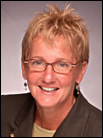
Tell me about yourself and your involvement with healthcare IT.
I have a great business background from having worked in a bank. In terms of healthcare IT, I started working for a vendor. We developed a practice management system and ultimately an EMR as years went on.
I worked in every area you could possibly work in. Implementation and training. I managed the programmers, the analysts, and the development team for our EMR. I helped implement about 120 practices on the system. Lots of different specialties, giving me a great background, and a tremendous background to go forward just working with groups in a consulting capacity, helping them with operations and technology.
When you implement — whether it’s practice management, scheduling, EMR — it’s all about what technology makes feasible and how you can actually change your workflow into that.
Is that EMR company still around?
They were bought out by another company. I left there in 1999 and I think the product is still around, but I don’t think they’re continuing to sell it. It was called Enhance.
What would you say are the top three bottom line financial or outcome improvements that a practice can achieve only through EMR adoption?
I have a client who has done tremendously well in a Medicare managed care environment, in terms of reaching bonus, because of the targets that were set for their patient outcomes — and I mean tremendously. They could never have done that without the EMR. They couldn’t have managed who would do for what. They couldn’t have managed which patients needed what screening. It’s an internal medicine practice and it almost mirrors what the internists are making in terms of how we’re doing with their bonus from their typical practice. That’s huge.
I have another multispecialty primary care client who was able to negotiate better reimbursement with a major player because they could demonstrate, using the data from their EMR, how effectively they care for their patients.
Then, of course, just plain old revenue; where after we get people over the hump and they get their productivity back to where it was — pretty much time-neutral — what we’ve experienced is an increase in collections because we’re capturing charges we might have missed. We’ve actually identified that. As well as providing services that we missed because we didn’t do a chart prep very well. You know, that might be tacking on a tetanus to an annual exam. Something that that patient needed that we missed had actually enhanced revenue.
What would you say are some of the biggest mistakes practices make when implementing EMRs?
They make it a technology project instead of making it an operational-type management project. They let somebody who’s pure IT lead it, rather than either partnering that person, or finding a lead that is clinical and understands what changes have to occur with nurses and physicians.
The leadership of the project — they don’t clearly identify what it is they want to achieve before they begin. They haven’t laid out what their vision is and what their objectives are. They just do it, like Nike would have them do it, and they get something that wasn’t planned for or they don’t get what they really need, but they didn’t really identify that. Not identifying objectives and having the wrong lead would be two of the major mistakes.
Does that lead to poor physician adoption?
It absolutely leads to poor physician adoption. About one-third of all my engagements in the past two years around the EHR were from groups that called and said, “Come and tell us if we picked the wrong system or if it’s us.” In every single case it was the implementation, it was not the wrong system.
You could almost make any EMR work in a physician practice setting, but it’s all about the implementation. What is it we want to do? How do we want to do it? What do we need it to do for us? Now, let’s look at how we have to change workflow. It’s poor nurse adoption as well as poor physician adoption. We don’t get nurses engaged and involved.
Many of the groups I went to help, I’ve become this kind of fixture. For many of those groups, I learned that we never even included nursing in demos. We didn’t engage nursing staff in terms of how could they let go of paper themselves. In some of the practices, nurses are still printing out lab reqs. Even though we’re sending a lab electronically, they print it out so then they can track across any lab. We don’t show them how they can use the system to just identify all open orders, or just identify lab open orders.
What do you think practices fear the most about computer hardware and networking that may also be holding them back from EMR adoption?
That’s a great question, that they make the wrong decision. I think that’s true even on the software, but that they’re like, “Well, we think that we’re going to carry around tablets, but what if we buy all those and then we want to put in thin clients in each of our exam rooms,” or, “Oh, will that really work? Am I going to have to log off and log on all the time if I use a thin client?” I think it’s the fear of making the wrong decision and buying a bunch of stuff that, then, they won’t be using.
How should they approach it?
I try and get them to go and see practices that are using: who’s using tablets; who’s using PCs in the exam rooms, their thin clients, desktops, whatever. I want them to go and visit. In fact, I encourage them.
If they’re going to be sensitive to the cost of travel, go right here in your community to see a practice using the EMR. It doesn’t have to be the one you want and it doesn’t have to be a practice that’s your specialty. Just look at how physicians and nurses have integrated into their workflow. That’s the medical model. They can relate to that. That’s the way they learn. The medical model is see one, do one, teach one. That helps them assimilate, or at least anticipate, what that’s going to be in their practice.
Let’s switch gears a bit to Regional Extension Centers. The goal of the RECs is to accelerate EMR adoption by providing financial support and offering product selection and training expertise. What will the RECs need to do to ensure success?
They’re going to have to either hire or really thoroughly train good people. People who have a background in systems; people who understand the clinical aspects. They don’t all have to be nurses or lab techs, but they better have lived in the practice setting for long enough that almost through osmosis.
A lot of people think I am a nurse. I am not a nurse. But if you’re there long enough and you’re observant enough and you pay attention and you’re interested, you’re going to figure a lot of stuff out and it’s going to become second nature to you. If we don’t understand and think the way that physicians and the nurses think, we’re not going to be able to help them change their workflow. I think there’s going to be a huge challenge trying to find the right people who can do this.
Do you think the financial support is going to be adequate to motivate physicians?
It’s pretty interesting because the stimulus has generated huge interest right now. I don’t know the numbers until every vendor that’s out there ends the quarter and says how many new contracts they’ve gotten. I certainly see an uptake anecdotally, and I think that for many it’s this idea that, “Well, I might as well take advantage of this because if I don’t, I’m going to end up having to do it anyway and I’ll lose out.” I think that there is, and I think that that’s been consistent.
I can remember in 2003, 2004, and 2005 asking physicians when I would speak, “OK, how many of you think you’ll be on an EMR in two years?” Then I’d say, “OK, now keep your hands up if think it’s going to be one year. Keep your hands up if you think it’s going to be six months.” You know, hands would go down at the same rate across three or four years. Everybody always thought it was going to be in two years. I’m like, well wait a minute, we should have been there by now. I think that this is the kind of tipping point that might get us there, but there are still a few.
Again, I’ve come across two since the whole stimulus came. They look at that and say, “You know what? This is not enough to make me want to change. I know that there’s going to be a stiff in 2015. They’re going to reduce my reimbursement for Medicare by X and I’ll have to pay attention to that, but you know, I think I can still live for the next five years after that and not have to change, or I haven’t found something that really fits me, or I just don’t see myself using it. I might even think I’m retiring in like five or 10 years, so why would I do this?”
What were the specialties of those practices?
That’s pretty interesting. One was a general surgeon and the other was ophthalmology. Yeah, we’re not talking primary care. You know, the people who look at a 1-2% hit and think, “Oh, my gosh, how can I make payroll?”
Many people have remained critical of the proposed Meaningful Use objectives, particularly, the short time to achieve many of the metrics. What’s your impression?
I think that they’re doable, but not without some pain. I certainly understand the criticism because we don’t have a lot of time. I think that one of the things we’re not focusing on enough is the fact that we have to be using a certified EHR and we still don’t know what that means. Who’s going to be the certifying body? If that’s the case, we’ve got vendors out there that are putting out guarantees that their products will be certified without really knowing what they need to go through.
The timing is going to have everybody on edge. I just got off a conference call with a client and I asked them if they were willing to give up their summer because they’re going through this whole process. They kind of laughed at me and they said, “Well, you got me until noon. I’m taking a long holiday now.” I said, “That’s exactly the problem you’re going to be faced with with all your nurses and doctors. Your timeline’s so aggressive.”
This timeline may be too aggressive, but the actual objectives are doable, I believe. There are plenty of groups that are doing many of these things already and they don’t realize, or they’re not giving themselves credit for that. I mean, everybody’s doing electronic claims. There’s lots that’s already being done.
Now we’re getting a little more concerned about some of the things that are a little deeper, like the computerized provider order entry and being able to provide patient summary. I have clients who, since year 2000, have been putting a nice little printed summary in every single patient’s hands that they see. They were using MedicaLogic at the time. We’re going to be able to do that kind of stuff electronically, or in the method that that patient requests. It’s just change, and it’s human nature to stick with the status quo.
What are some easy consumer-type technologies that doctors can use to improve their practices?
I’ve got this internal medicine practice in Nashville and 40% of their patients are Medicare. You know what? They’ve got 60% of their patients to register and use Medfusion. They get their lab results, 60% of their patients, and they’ve got a very high Medicare population.
The portals are great. Kiosks are great. I’ve got a client using one and patients swipe their credit card, then the kiosk asks them if they want to pay their co-pay with that credit card. Then it goes out and does their insurance eligibility. Patients stand in line to use it rather than go to the receptionist who’s available because they know it’s going to be done right and they get to do it themselves. This is America — we like to self-serve.
I have some folks that are trying to use some of the social media as a little marketing tool and keep patients engaged with what’s happening in their practice and that they’re sponsoring a little race in the community, or they’re going to be at a high school doing some program. Practices who are kind of thinking a little bit outside the typical Yellow Page ad or whatever, are going to reach out and recognize that their new generation of patients uses these tools, so they’re going to need to as well.
What are some suggestions you would have, or pitfalls, that practices should be aware of when a community doctor partners with a hospital to implement an EMR in their office?
When physicians call me and say, “Hey, there’s this great deal.” I’m like, “Well, would that have been a solution you would have bought yourself?” I say, “Go through the same due diligence on that product that you would if you were paying full fee. If you can honestly make that decision that, yes, I would have bought this if I was paying full fee, then that’s probably the right solution.”
Sometimes they are not the right solutions. They might be products that are second-class citizens to what the hospital IT vendor is providing to the hospital. I think it’s especially important that they go do due diligence. Cost should not be the first issue in your selection process. That’s pretty critical.
The other piece is understanding who’s going to support you. Is it just the physician liaison department? Is it just the IT department? Do they have a trainer dedicated to training an ambulatory product, or is that somebody who’s going to be pulled out of a hospital department, and when there’s a crisis in the hospital department that’s going to be their first place. Will they be providing help desk services? Where are they getting their training and then their ongoing support?
Then, of course, if it’s being hosted, they want to be sure that they’re getting the kind of backup and disaster recovery that they’ll feel comfortable with.
I read an interview you did with Evan Steele of SRS about a year ago, and one of the things you said was that, “…the voice of practicing physicians not being heard in Washington.” In light of the recent healthcare legislation, has your opinion changed?
Oh, wow. The voice of practicing physicians has probably gotten louder with all of these associations hopping on the bandwagon. What is it, 51 or 52 now that have come out and said we need to make changes? I think that their associations have collectively kind of gotten together, and I think that’s another interesting thing that’s different from a year ago. They’re starting to collaborate. Associations are working together instead of pitting each other against each other. They’re saying ‘as physicians,’ not as this specialty or that specialty. I think that is pretty powerful. I think that they need to do that.
Last question: does your own doctor use an EMR? Would you go see a new doctor who didn’t?
That’s a great question because I’m over 50, I see an internist; and the IM center doesn’t do pap smears, so I see a GYN. They both are using an EMR and they both have opportunities to use it a little bit better. They don’t take advantage of all the portal services they could.
One of them does a great job of having all lab results and the like available and sitting there talking to you about your labs is just fantastic. That’s ideal because we can both be engaged at the same time and I can take them home with me if I want to.
The other one maybe doesn’t do as great a job at conveying some of the follow-on things that an EHR can do for the patient. Primary care doctors, and really GYN is primary care world and not the OB world, and for internal medicine, I think they’re above average.
Would I change? That’s an interesting question. I’m a very healthy 54-year-old female who’s active and exercises, no medication, not overweight, nothing, and I don’t feel like that’s a critical factor for me. However, for my mother, who I’ve been following around for lots of care and lots of physicians, it’s a tremendous asset for her physician to have that EMR. That might have been a different situation if we couldn’t exchange information between collaborating physicians in different cities if they didn’t have that.

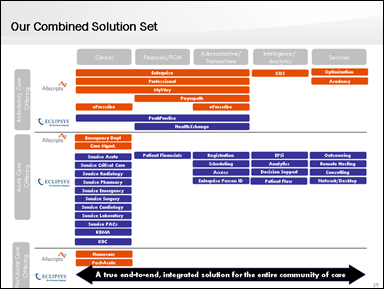
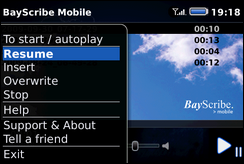
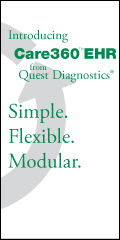
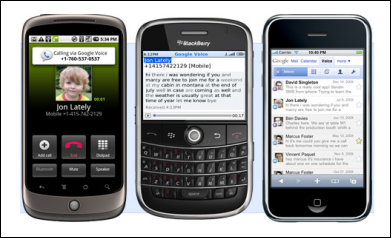









The article about Pediatric Associates in CA has a nugget with a potentially outsized impact: the implication that VFC vaccines…